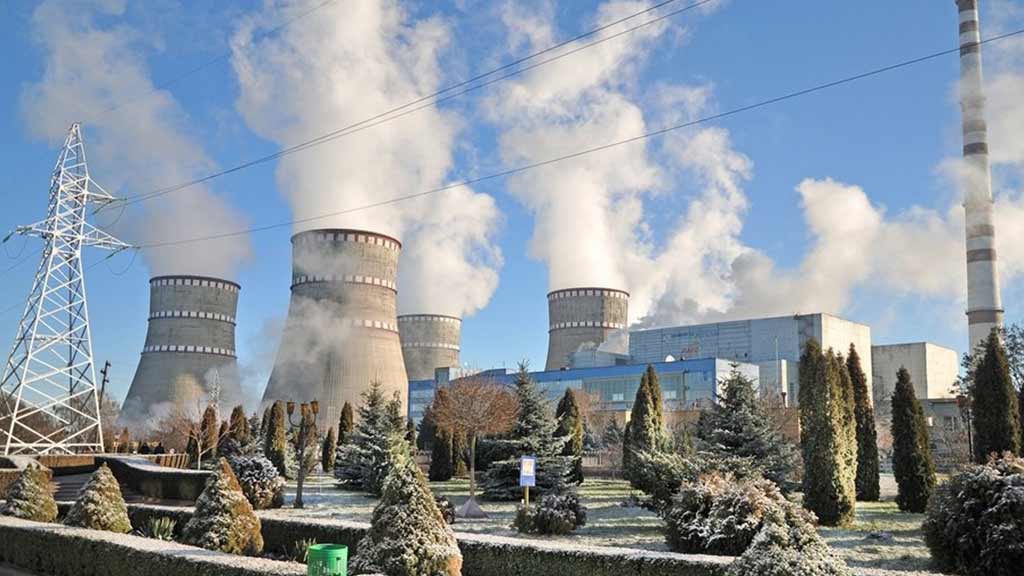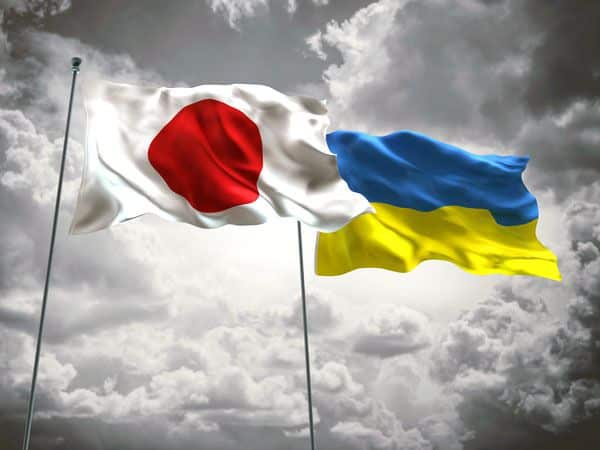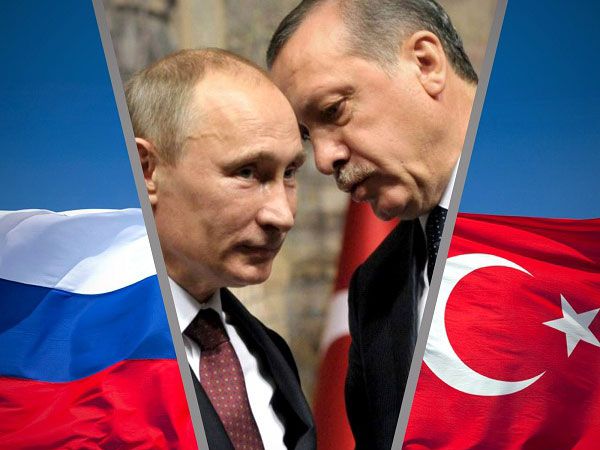About the correctly chosen priorities
2023 should be the year of our Victory, and restoration, reconstruction, and modernization are the most common words. And when plans begin to be implemented in certain projects, and geopolitics is replaced by geoeconomics, we will be expected to succeed again. To achieve it, it is important to understand who is who in the post-Cold War and the post-war world, in terms of economic potential. After all, the interests of states in the field of security policy, trade, and economic relations do not always form one “pair of shoes”.
See also: Putin raised the stakes: how Japan helps Ukraine
The experience of Asian countries, as well as Europe, which rose after devastating wars, large-scale natural disasters, and civil conflicts of the 20th century, shows that the winners are always those on whose side are the countries of the liberal-democratic camp, not autocrats, even with money. When it comes to China and Vietnam (to say nothing about the Warsaw Pact countries), the influence of the USSR was once limited to two or three mega-buildings, and the attempt to export the planned economy failed miserably, despite the huge subsidies from the fraternal Communist Party of the Soviet Union. It seems to be an axiom that freedom of entrepreneurship, eradication of corruption, and creation of conditions for attracting investments not only foreign but also domestic – in the industrial sector, education, research, and development are a proven recipe for success.
It has been repeatedly written that the XXI century is the century of Asia. The unprecedented diplomatic activity in Southeast and East Asia throughout the outgoing year, even despite the world’s attention focused on Ukraine, only confirms this thesis. Next year is specifically designed to strengthen and develop it: Japan will preside in the G7, and India – in the G20 (Russia’s place in the “twenty” will be taken by someone else). This is a huge chance for Japan to restore the pace of economic development, strengthen its own and international security, and demonstrate leadership in the reconstruction of Ukraine. For its part, India has long been languishing in the dressing room of the world elite, and the opportunity to host the G20 summit may well become a pass to the big leagues. The only question is whether the world’s most populous country will want to decide with whom it will build the future – with the democratic world or flirting with autocrats. With all this, there is no doubt that the closest attention will be focused on China, which has returned to big politics and where there is a serious economic slowdown. Low, as for China, growth rates have a bad effect on the whole of East Asia: here the industrial heart of the world beats rather unevenly. But even worse is the uncertainty in Xi Jinping’s performance in relations with China’s largest trading partners – the EU and the United States.
See also: How “Russian peace” is being built in Turkey and how it threatens Ukraine’s partner
World leaders obviously have something to worry about. In 2019, China was ahead of the United States in the number of patent applications filed through the World Intellectual Property Organization (WIPO): 58,990 Chinese applications against 57,840 American ones. It is interesting that in 1999 China filed only 276 applications, i.e. in twenty years – an increase of 213 times. According to the organization’s leadership, China’s rapid rise to the leading position in the number of international patent applications is one of the manifestations of a long-term shift in the trajectory of innovation towards the East: in 2019, Asian applicants accounted for more than half of all applications (52.4%) against 23.2% of European ones. Japan (52,660 applications) and the Republic of Korea (19,085) are also among the leaders in Asia. A significant, by 46.7%, increase in the number of applications was registered in Turkey. In terms of companies, the leaders were Huawei, Mitsubishi, and Samsung. According to this indicator, China did not yield to the leadership of the United States either in 2020 or 2021. At the same time, China maintained a high level of innovation generation even in the midst of the coronavirus pandemic: last year, 69,540 applications were filed (against 59.97 thousand in the United States and 50.26 thousand in Japan).
Meanwhile, according to experts, China is slightly artificially inflating the number of patents filed for registration (not all of them are approved). However, in 2021, China filed 40% of the world’s patent applications in the field of 6G (mainly Huawei), and this is very serious. It is expected that this technology will be ready for implementation within the next two years. The United States filed 35.2% of 6G applications, Japan – 9.9%, and the Republic of Korea – 4.2%. Thus, East Asia is firmly entrenched in the Olympics of modern communications technologies, and this was not prevented by covid or sanctions against the leader of the race, Huawei. It is unclear whether the United States or Europe will be able to oppose something to this state of affairs.
These statistics are a consequence of the fact that four of the five largest scientific and technological clusters in the world are located in East Asia: one in Japan, two in China, and one in the Republic of Korea (the fifth is in California). This is stated in the materials of the World Intellectual Property Organization about the leadership of countries in the field of innovation. The global innovation ranking takes into account dozens of parameters – from the number of patent applications to the amount of spending on education. Today, the Tokyo-Yokohama cluster leads the ranking of industrial and innovation territories, followed by Shenzhen-Hong Kong-Guangzhou (China and Hong Kong), Beijing (China), Seoul (Republic of Korea), and San Jose-San Francisco (United States of America).
See also: The biggest geopolitical scam of the 20th century: why Russia’s influence in the UN is baseless
Innovation centers are of fundamental importance as tools for development, which in the modern world is unthinkable without technology. Resilience against global crises, job creation, investment attraction – all this happens if a country has places where the future is created. In Asia, especially in China and other middle-income countries, including India, Iran, and Turkey, new centers of scientific and technological development are emerging, which can compete with the best American and European ones. Last year, for the first time, China and the United States equaled the number of leading scientific and technological clusters – 21 in each country. For comparison: in Germany, there are ten clusters, and in Japan – five.
Another indicator of the state of the industrial base is robotics. The largest producer of industrial robots is Japan: 45% of the world’s volume. Of these, according to 2020 data, 78% (136,069) of the units were exported, and most of all, 36% – to China. China closes the top ten leaders in industrial automation – 187 robots per 10 thousand employees in 2019, and at the top of the pyramid is the Republic of Korea – 855 robots (Japan is in second place with 364 robots). In the competition of continents, Asia is leading, of course, with an average of 188 machines per 10 thousand live workers, in Europe – 114, and in the United States – 103. Among the manufacturers of industrial robots, Japanese companies retain leadership: five of the 8 largest are Japanese.
See also: War for the Arctic or energy sabotage: why Russian spies have become more active in Norway
It is very interesting that two covid years have not changed the trend of the ongoing “offensive” of the Asian century. However, in East Asia itself, new circumstances have emerged that make us think about the redistribution of the regional balance. For example, Nikkei conducted a survey of large Japanese companies that are actively working with China. It turned out that 53% of companies want to reduce the share of purchases in China. In particular, 60% of engineering companies, 57% of automobile and chemical companies and 55% of electronics companies said they would do so. As for the reasons for reducing dependence on China, 80% of companies noted concerns about the emergency situation in Taiwan (China’s possible war with it), and 67% referred to China’s “zero tolerance to covid” policy, implemented through ruthless quarantines (recently, even Apple’s employees who produce products rioted). Of those who said they would reduce their dependence on suppliers in China, about 86% named Japan as an alternative, followed by Thailand (76%), and other Southeast Asian countries such as Vietnam and Indonesia. In addition to the weak yen (the official currency of Japan), Japanese companies now find domestic production more profitable than foreign production due to slow wage growth inside the country. For example, office equipment maker Oki has stopped making ATMs and printers in China since 2020, moving production to Vietnam. Oki still sources some parts from China, but the company said its policy is to “purchase all parts outside of China in the future.” Panasonic transferred part of the production of vacuum cleaners and other products from China to Japan, although, in the days of Deng Xiaoping, Panasonic was the leader in the development of the Chinese market. DMG Mori also moved the purchase of cast parts for machine tools to Japan.
On the other hand, in recent years, South Korea has become one of the world’s leaders in the production of such specific products as weapons and has almost completely ousted Russia from many regional markets. In two years, the export of arms produced by the Republic of Korea has tripled and reached 10 billion US dollars. Very important processes, from this point of view, are taking place in Japan and Vietnam, where a large arms exhibition was recently held.
But perhaps the most important area of Asia’s dominance in the world economy is the production of semiconductors. Taiwan remains the undisputed leader, producing 70% of ultra-modern chips. Not only China, whose capabilities are severely limited by US sanctions, but also Japan and India rushed after it. According to the Nikkei agency, a group of eight leading Japanese companies, including Toyota Motor and Sony Group, will join forces with the government to create a new company for the development and production of next-generation semiconductors. Rapidus – is the name of the national champion in the field of advanced semiconductors, which plans to start mass production in 2027. Supplier Toyota-Denso, NTT, chipmaker Kioxia Holdings, NEC and SoftBank are among the companies expected to invest 1 billion yen ($6.8 million) each in the project at its initial stage.
Japan considers “domestic” semiconductor production vital to its economic security, not least because dependence on Taiwan poses geopolitical risks. This step was taken after a lost decade in the 2010s when Japan lost market share and did not invest in its once flourishing electronics industry. According to Rapidus president Atsushi Koike, who recently headed memory chipmaker Western Digital Japan, this is the “last chance” to come back, then it will be too late. Rapidus plans to invest 5 trillion yen ($36 billion) in capital and other investments over ten years. Eight companies will invest a total of 7.3 billion yen, and the government will offer 70 billion yen in subsidies.
The Indian company Tata Group will start producing semiconductors in the country within a few years, which, according to the chairman of the board of directors of the main company of the group, will make this country a key part of the global chip supply chain. In an interview with Nikkei Asia, Natarajan Chandrasekaran, chairman of the board of directors of Tata Sons, said that the conglomerate plans to launch new enterprises in emerging industries, such as electric vehicles. For this purpose, Tata Electronics was founded in 2020, within which the semiconductor assembly testing business will be organized. Thus, it should be expected that even despite the $40 billion investment that Taiwan’s TMSC is making in new chip production in the United States, Asia will maintain and even increase the gap with other regions in terms of volume and quality of semiconductor production.
In the not-so-distant past, the same East Asian countries, which today compete with the EU and the USA in terms of technological development, were in ruins after devastating wars. However, correctly chosen priorities – the development of the real sector of the economy, production of products with high added value, strict quality control and intellectual property protection regime, the creation of favorable conditions for investment helped them in a short time not only to restore the economy but also to build anew the social sphere, which is admirable. Of course, the cheapness of labor, as in China, and the emphasis on the development of the personnel training system, as in the Republic of Korea, and the unique business culture of zaibatsu (any of the large capitalist enterprises of Japan before World War II, similar to cartels or trusts but usually organized around a single family), formed in Japan, played their role. However, the key factor was still the understanding that the consumer society should be preceded by a society of production, sewn like a good suit, according to the best patterns of the coolest fashion designers in the world.
Building the processes of reconstruction and modernization of the post-war economy, it will be important for us to find the right balance between the traditionally most important European vector and deepening cooperation with the leading democracies of Asia. Political arguments in favor of supporting Ukraine should be complemented by balanced business proposals that best take into account the opportunities of the countries of the region, where half of the population lives today, and half of the world’s GDP is produced. And then the success expected from us will become a reality.
Sergiy Korsunsky, the Ambassador Extraordinary and Plenipotentiary of Ukraine to Japan, originally posted on ZN.ua. Translated and edited by the UaPosition – Ukrainian news and analytics website
See also: Will Turkey be able to take advantage of the weakening of Russia?





